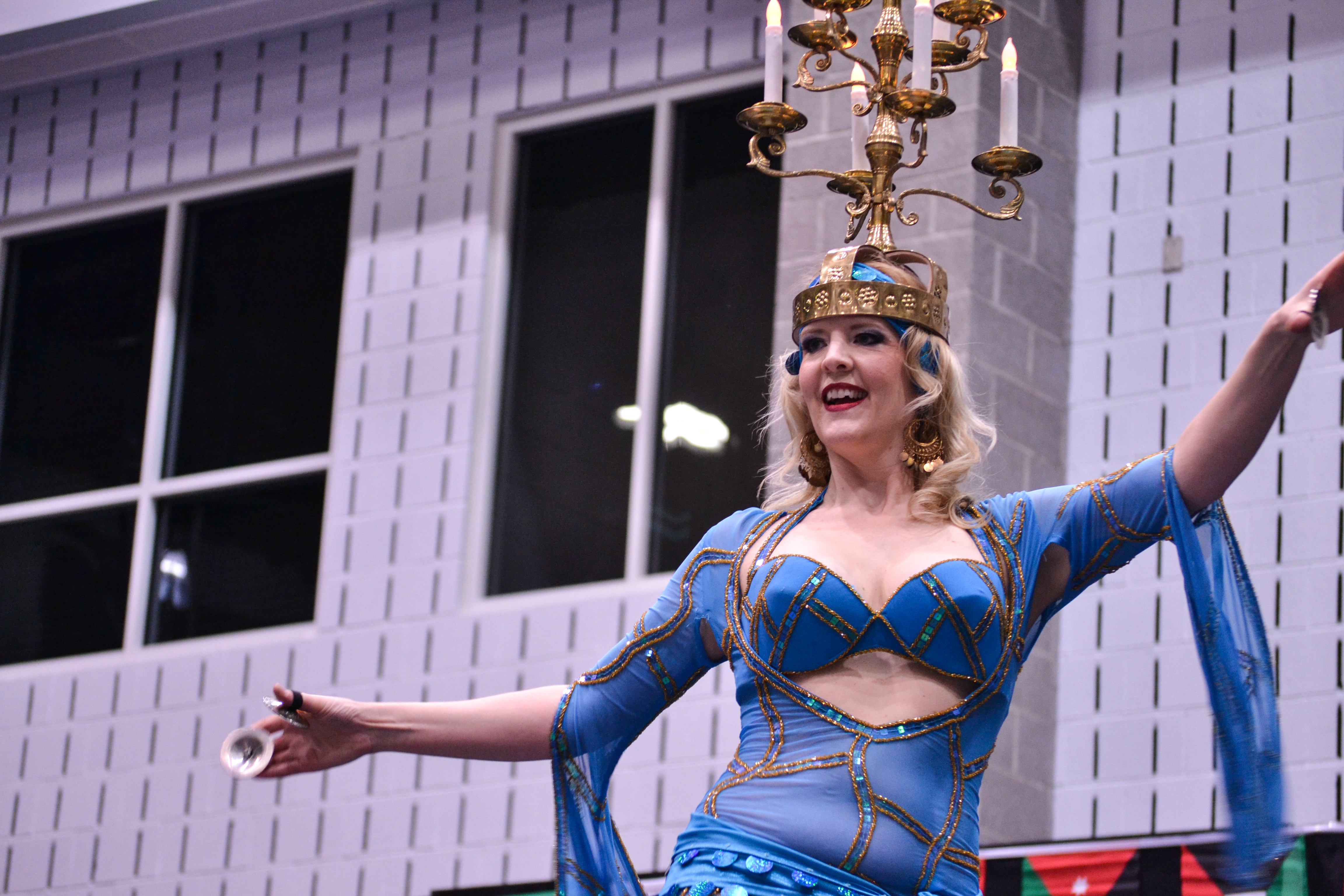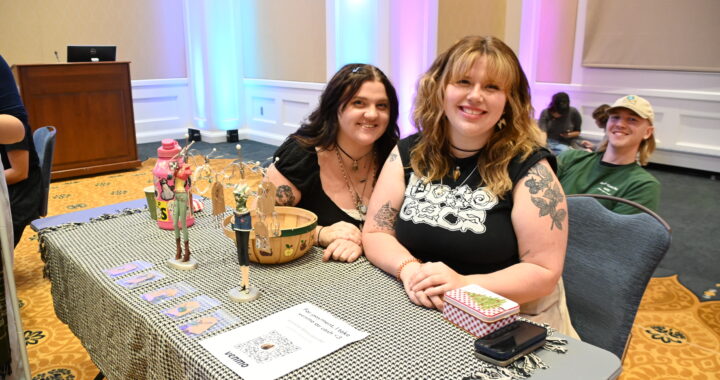Arab Culture Night celebrates culture and diversity in Anderson Center
3 min read
Ginny Clark
By KELLY EMMRICH
The University of Mary Washington’s fifth annual Arab Culture Night was a lively event accompanied by local and student performers and provided attendants with a glimpse at another culture.
More than 600 hundred UMW community members attended the event, in addition to members of local Arab communities.
The event brought different cultures together for a festive evening of singing, dancing, eating and educating about Arabic culture. The evening began with a brief Arabic lesson and transitioned into a fashion show, followed by a performance from a local band.
The fashion show featured several types of Arabic styles, ranging from traditional dresses, such as the Kuwaiti jallabiya, to the more modern Egyptian khimaar. The vibrant day dress contrasted with muted evening gowns. While many of the dresses were similar in color and style, they represented the variety of style found in Arab fashion and culture.
Traditional men’s fashion was also featured, and UMW students modeled the clothes.
After the fashion show, DJ Kimo Band played upbeat songs that energized the audience. During the songs, the audience had the opportunity to participate in a line dance called the Debke. It is the national dance of many countries in the Middle East and southwest Asia and is often performed at festive occasions.
In Arabic culture, the audience is expected to give the performers vocal encouragement and affirmation to help foster community. The audience was not shy about interacting during this event, actively participating in the singing and dancing.
Sarah Starr Attkisson, a sophomore geology major, said that her favorite part of the night was the feeling of community.
“I love it when everyone gets up and dances to the music. Just the different cultures coming together is really amazing,” said Attkisson, who also attended the event last year.
The Debke Club is a student club that creates a fusion of traditional Arabic dances and mainstream dances, merging American and Arabic culture. Several members of the club are foreign exchange students, who bring their own cultural influences to the club.
Traditional Middle Eastern food was served throughout the night and consisted of appetizers such as Tabbouleh (traditional Lebanese salad), rice, shawerma and kabobs. For dessert, a popular cheese pastry called kunafeh was served.
Ye Ali, an audience member and UMW parent, said that the food was her favorite part of the event.
“I’m enjoying all the music and the community [feelings], but I’m honestly waiting for the food,” said Ali during the event.
The belly dancing is a crowd favorite year after year. Kiyaana, the belly dancer, began her performance with a candelabrum atop her head. This traditional technique requires the dancer to balance a single candle on her head, normally during wedding processions.
The candles represent light, love and prosperity, originally the dance performed with a candle, but now a candelabrum is used.
Belly dancing originated from the Middle East and comes from the French term “danse du ventre.”
Attendees were not disappointed at the fifth annual Arab Culture night. The always exciting event introduced the UMW community to new experiences, new cultures and exotic food.


